Welcome to the PADI Open Water Diver Manual, your comprehensive guide to becoming a certified scuba diver. This manual, developed by PADI, the world’s largest recreational diver training organization, provides detailed insights into scuba diving fundamentals, safety procedures, and practical skills. Designed for beginners, it ensures a safe and enjoyable diving experience, covering essential topics from basic scuba skills to advanced techniques.
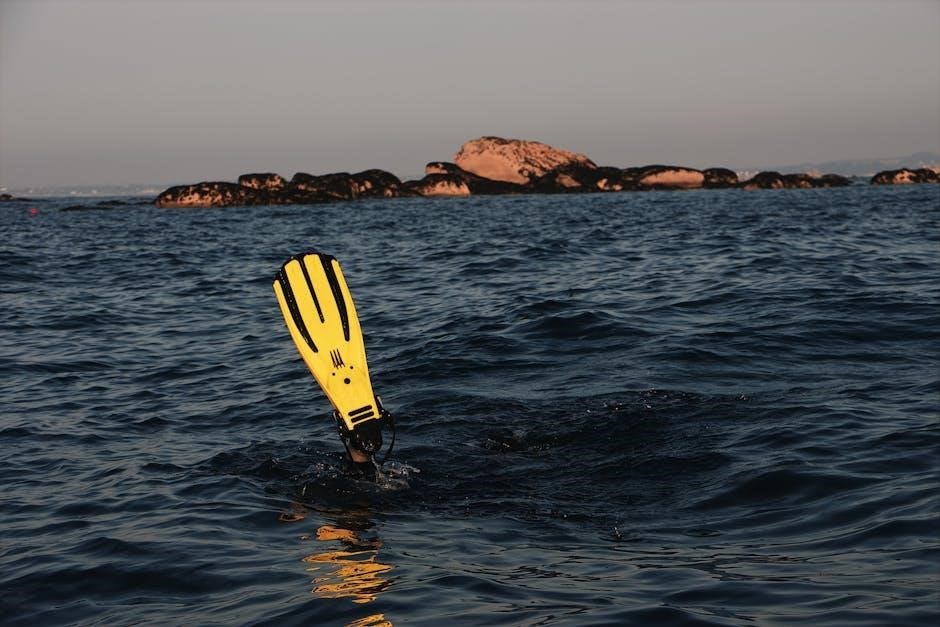
1.1 Overview of the PADI Open Water Diver Certification
The PADI Open Water Diver certification is the world’s most recognized entry-level scuba diving credential. Offered by the Professional Association of Diving Instructors (PADI), it teaches fundamental scuba skills, safety procedures, and diving knowledge. The certification is designed for beginners, enabling them to dive safely and confidently. It involves both theoretical and practical training, including confined water sessions and open water dives. Upon completion, divers receive a certification recognized globally, allowing them to explore underwater environments independently. This certification is the first step in PADI’s continuum of diving education.
1.2 Importance of the PADI Open Water Diver Manual
The PADI Open Water Diver Manual is a crucial resource for achieving scuba diving certification. It provides detailed explanations of diving principles, safety protocols, and practical skills, ensuring a comprehensive understanding. The manual serves as a foundation for both theoretical knowledge and practical application, helping divers make informed decisions underwater. By following the manual, students can master essential techniques, reduce risks, and enhance their diving experiences. It is an indispensable guide for safe and enjoyable diving, making it a cornerstone of PADI’s training program.
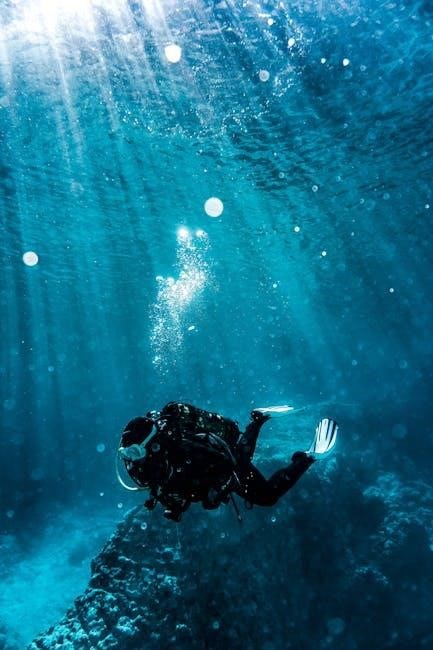
1.3 Structure and Content of the Manual
The PADI Open Water Diver Manual is structured to provide a logical progression of knowledge and skills. It begins with foundational concepts like diving physics and physiology, followed by safety procedures and emergency protocols. The manual is divided into sections, each focusing on specific topics such as equipment usage, dive planning, and environmental considerations. Interactive elements like quizzes and exercises reinforce learning, while detailed illustrations and diagrams enhance understanding. This comprehensive approach ensures students are well-prepared for both theoretical and practical aspects of scuba diving.

Course Prerequisites and Requirements
The PADI Open Water Diver course requires completion of necessary documentation and forms, ensuring all safety and administrative steps are met for certification and safe training.
2.1 Age and Medical Requirements
The PADI Open Water Diver course requires participants to meet specific age and medical criteria. The minimum age for certification is 15 years old, though younger divers can enroll in junior programs. A medical examination by a physician is mandatory to ensure candidates are fit for diving. Certain health conditions may restrict participation, so completing the PADI Medical Questionnaire is essential. This step ensures safety and suitability for the physical demands of scuba diving.
2.2 Swimming and Diving Skills Needed
Prospective divers must demonstrate basic swimming and diving skills to enroll in the PADI Open Water Diver course. Candidates should be comfortable in water, capable of treading water, and able to swim 200 meters without assistance. Additionally, they must complete a 300-meter swim using any stroke and a 10-minute float. These skills ensure divers can manage themselves underwater and perform necessary tasks safely. Proficiency in these areas is crucial for progressing through the course and becoming a competent scuba diver.
2.3 Necessary Documentation and Forms
Before starting the PADI Open Water Diver course, participants must complete specific documentation. This includes a medical questionnaire to ensure fitness for diving and a liability release form. Additionally, students must provide proof of age and any relevant medical clearance. The PADI Diver Medical Questionnaire is a critical document that helps identify any health concerns. All forms must be signed and submitted before beginning training. Proper documentation ensures compliance with safety standards and allows instructors to tailor the course to individual needs, promoting a safe and effective learning environment.
Key Concepts Covered in the Manual
The manual covers diving physics, physiology, and safety procedures. It explains dive tables, computers, and emergency protocols, ensuring a comprehensive understanding of scuba diving fundamentals and practices.
3.1 Diving Physics and Physiology
The manual explores the fundamental principles of diving physics, such as pressure, buoyancy, and gas laws, essential for understanding underwater environments. It also delves into diving physiology, explaining how the human body reacts to pressure changes, including gas absorption and decompression. These concepts are crucial for safe diving practices, helping divers understand how to avoid injuries and manage conditions like nitrogen narcosis or decompression sickness. Practical applications of these principles are emphasized to ensure a safe and enjoyable diving experience.
3.2 Understanding Dive Tables and Computers
The manual explains the use of dive tables and computers to plan safe dives. Dive tables provide pre-calculated limits for depth and time, while dive computers offer real-time adjustments. Understanding these tools helps divers avoid decompression sickness and extend bottom time safely. The section highlights how to interpret tables, set computer parameters, and apply safety stops. Proper use of these tools is essential for responsible diving practices and ensures a safe, enjoyable experience underwater. This knowledge is vital for all divers to manage their dives effectively.
3.3 Safety Procedures and Emergency Protocols
The PADI Open Water Diver Manual emphasizes critical safety procedures and emergency protocols to ensure diver well-being. It outlines steps for handling common diving emergencies, such as panic situations, equipment failures, and underwater crises. Divers learn how to perform buddy checks, use safety devices like alternate air sources, and deploy surface marker buoys. The manual also covers emergency ascent procedures and first aid for diving-related injuries. Proper execution of these protocols minimizes risks and enhances diving safety, preparing divers to respond confidently in critical situations.
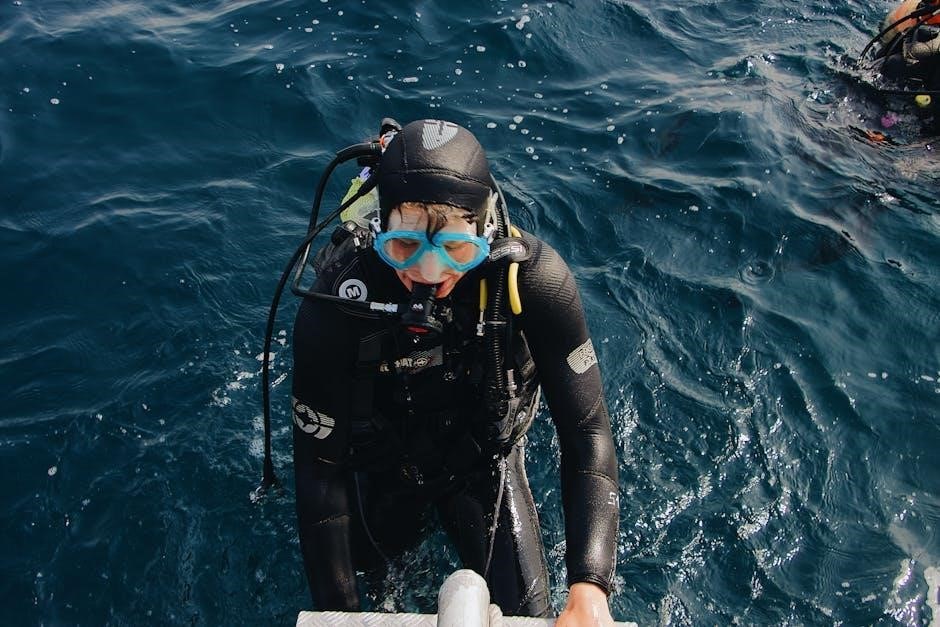
Equipment Overview
The PADI Open Water Diver Manual details essential scuba diving gear, including masks, regulators, BCDs, and tanks. It explains proper equipment selection, usage, and maintenance to ensure safety and comfort underwater.
4.1 Essential Scuba Diving Gear
The PADI Open Water Diver Manual outlines the essential scuba diving gear needed for safe and enjoyable dives. This includes a mask, snorkel, and fins for underwater vision and mobility. A regulator delivers breathable air, while a BCD (Buoyancy Control Device) helps maintain proper buoyancy. A wetsuit or dive skin provides thermal protection, and a scuba tank holds the compressed air supply. Additional gear like a dive computer, depth gauge, and dive light enhances safety and navigation. Proper equipment ensures a comfortable and secure diving experience.
4.2 Proper Use and Maintenance of Equipment

The PADI Open Water Diver Manual emphasizes the importance of proper equipment use and maintenance to ensure safety and longevity. Divers should always follow manufacturer guidelines for assembling, inspecting, and using gear. Regular rinsing with fresh water, drying, and storing equipment in a cool, dry place prevents corrosion and damage. Proper maintenance also includes checking for worn or damaged parts and replacing them promptly. Neglecting these steps can lead to equipment failure, posing serious safety risks during dives.
4.3 Choosing the Right Equipment for Beginners
Choosing the right equipment as a beginner is crucial for comfort, safety, and an enjoyable diving experience. The PADI Open Water Diver Manual recommends selecting gear that fits properly and suits your diving conditions. Prioritize essential items like a well-fitting mask, snorkel, fins, and wetsuit or dive skin. For scuba gear, consider renting or purchasing entry-level equipment designed for ease of use. Consulting with a PADI instructor or dive professional ensures you make informed decisions tailored to your needs and preferences, helping you build confidence in your setup.
Diving Techniques and Skills
The PADI Open Water Diver Manual emphasizes mastering essential diving techniques, including buoyancy control, underwater navigation, and effective communication. These skills ensure safe and confident diving experiences.
5.1 Basic Scuba Skills and Procedures
The PADI Open Water Diver Manual details essential scuba skills, starting with equipment preparation and safety checks. Divers learn breathing techniques, mask clearing, and regulator recovery. These foundational skills ensure comfort and safety underwater. Proper buoyancy control and underwater movement are also emphasized. The manual guides learners through confined water training, where they practice skills like entering the water, descending, and ascending safely. Mastering these procedures builds confidence and prepares divers for open water environments, ensuring a secure and enjoyable diving experience.
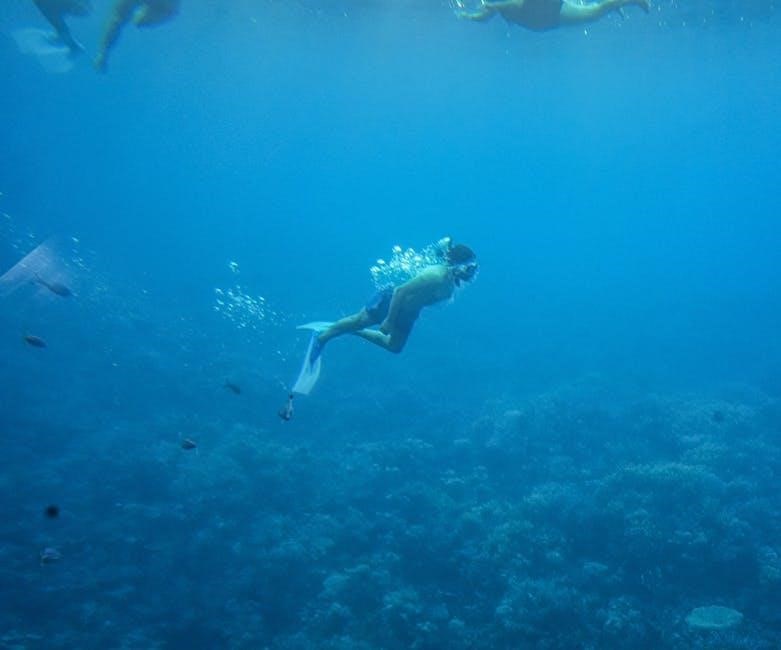
5.2 Navigation and Communication Underwater
Mastering underwater navigation and communication is crucial for safe and enjoyable diving. The PADI Open Water Diver Manual teaches divers to use compasses, natural landmarks, and hand signals to stay oriented and convey messages. Clear communication with dive buddies ensures coordination and safety. Techniques like pointing, gesturing, and using standardized signals are emphasized. Additionally, divers learn to use dive computers for tracking depth and time, enhancing navigation accuracy. Effective communication and navigation skills are vital for building confidence and ensuring a successful diving experience.
5.3 Buoyancy Control and Dive Planning
Buoyancy control is a fundamental skill in scuba diving, allowing divers to maintain a stable depth with minimal effort. The PADI Open Water Diver Manual emphasizes techniques such as breathing naturally, adjusting weight, and using the BCD effectively. Proper buoyancy helps conserve energy and protect the environment. Dive planning is equally important, involving depth and time limits, air supply management, and safety stops. By mastering these skills, divers can ensure safe, enjoyable, and environmentally responsible underwater experiences. Effective planning and buoyancy control are essential for every successful dive.
Safety and Risk Management
The PADI Open Water Diver Manual emphasizes identifying and managing diving risks, ensuring safe practices, and preparing for emergencies to protect divers and the environment effectively.
6.1 Identifying and Managing Diving Risks
The PADI Open Water Diver Manual teaches divers to identify and manage risks through thorough planning and awareness. It emphasizes assessing environmental conditions, personal health, and equipment functionality. Divers learn to recognize potential hazards, such as strong currents or limited visibility, and implement safety protocols to mitigate them. The manual also covers the importance of using checklists, monitoring air supply, and staying within depth limits. Understanding physiological factors, like nitrogen absorption, is crucial for safe diving practices and emergency preparedness.
6.2 Emergency Procedures and First Aid
The PADI Open Water Diver Manual details essential emergency procedures and first aid techniques for divers. It covers how to respond to panic, injuries, or equipment failures underwater. Divers learn to stay calm, assess situations, and act methodically. The manual emphasizes the importance of providing oxygen, controlling bleeding, and managing shock. It also outlines steps for safe ascents, rescue breathing, and CPR in diving-related emergencies. Proper first aid and emergency protocols are crucial for minimizing risks and ensuring diver safety.
6.3 The Role of the Dive Buddy System
The dive buddy system is a cornerstone of safe scuba diving, as emphasized in the PADI Open Water Diver Manual. Buddies monitor each other’s air supply, equipment, and well-being, ensuring mutual assistance. This system enhances safety by allowing divers to respond quickly to emergencies and share responsibilities. Proper communication, pre-dive planning, and staying within sight are key components. The manual stresses that a reliable buddy system minimizes risks and fosters a culture of safety and preparedness during every dive. It is essential for all divers to adhere to this practice.

Environmental Considerations

Environmental considerations in the PADI Open Water Diver Manual emphasize marine life conservation and responsible diving practices. Divers learn to protect ecosystems, avoid touching reefs, and respect local regulations, promoting sustainable diving experiences that preserve underwater environments for future generations. This section highlights the importance of ethical diving to maintain marine biodiversity and ecological balance. By adhering to these principles, divers contribute to the preservation of our oceans. Environmental stewardship is a key aspect of PADI’s training philosophy. Divers are encouraged to participate in conservation efforts and report environmental hazards. Understanding and following local diving regulations ensures the protection of sensitive habitats and wildlife. This fosters a culture of responsibility among divers, promoting the long-term health of marine ecosystems. The manual also discusses the impact of human activities on marine life, stressing the need for awareness and proactive measures to minimize harm. By adopting environmentally conscious practices, divers can help safeguard the beauty and diversity of the underwater world for years to come. The PADI Open Water Diver Manual serves as a guide not only for diving skills but also for becoming an advocate for marine conservation. Divers are encouraged to stay informed about environmental issues and participate in initiatives that protect marine environments. This approach ensures that diving remains a sustainable and eco-friendly activity. The manual underscores the interconnectedness of human actions and marine health, inspiring divers to take an active role in conservation. Through education and awareness, PADI empowers divers to make a positive impact on the environment. This section of the manual is essential for fostering a deeper appreciation and respect for the underwater world. By prioritizing environmental considerations, PADI sets a standard for responsible and sustainable diving practices worldwide. Divers who embrace these principles help ensure that marine ecosystems remain thriving and vibrant for future generations to enjoy. The PADI Open Water Diver Manual is a comprehensive resource that integrates environmental stewardship into every aspect of diver training. This holistic approach ensures that divers are not only skilled but also mindful of their impact on the environment. The manual’s emphasis on environmental considerations reflects PADI’s commitment to preserving the world’s oceans and promoting sustainable tourism. By educating divers about the importance of marine conservation, PADI contributes to the global effort to protect marine biodiversity. This section of the manual is a vital component of PADI’s mission to create a community of environmentally conscious divers. Through its teachings, PADI inspires divers to become ambassadors for marine conservation, fostering a culture of responsibility and care for the underwater world. The PADI Open Water Diver Manual serves as a powerful tool for promoting environmental awareness and sustainable diving practices. By integrating environmental considerations into its curriculum, PADI ensures that divers are equipped with the knowledge and skills needed to protect marine ecosystems. This approach not only enhances the diving experience but also contributes to the preservation of the world’s oceans for future generations. The manual’s focus on environmental stewardship is a testament to PADI’s dedication to creating a sustainable and eco-friendly diving community. By prioritizing environmental considerations, PADI sets a high standard for responsible diving practices that benefit both divers and the marine environment. This section of the manual is an essential part of PADI’s comprehensive training program, ensuring that divers are well-informed and proactive in their role as environmental stewards. Through its emphasis on marine conservation, the PADI Open Water Diver Manual empowers divers to make a positive impact on the world’s oceans. This section is a key component of PADI’s mission to promote sustainable diving practices and protect marine ecosystems for the benefit of all. By educating divers about environmental considerations, PADI fosters a community of responsible and eco-conscious individuals who are committed to preserving the underwater world. The PADI Open Water Diver Manual is an invaluable resource for anyone seeking to become a certified diver while also contributing to marine conservation efforts. This section of the manual highlights the importance of environmental awareness and responsible diving practices, ensuring that divers are equipped with the knowledge needed to protect marine ecosystems. By integrating environmental considerations into its training program, PADI promotes a culture of sustainability and stewardship within the diving community. The manual’s emphasis on marine conservation reflects PADI’s commitment to preserving the world’s oceans and promoting eco-friendly diving practices. Through its comprehensive approach, PADI empowers divers to become active participants in environmental protection, ensuring that the underwater world remains healthy and vibrant for future generations. The PADI Open Water Diver Manual is a powerful tool for promoting environmental awareness and sustainable diving practices. By focusing on marine conservation, PADI inspires divers to take an active role in protecting marine ecosystems. This section of the manual is essential for fostering a culture of responsibility and care for the underwater world. By prioritizing environmental considerations, PADI sets a high standard for responsible diving practices that benefit both divers and the marine environment. The manual’s emphasis on environmental stewardship is a testament to PADI’s dedication to creating a sustainable and eco-friendly diving community. Through its teachings, PADI empowers divers to make a positive impact on the world’s oceans, ensuring that marine ecosystems remain thriving and vibrant for years to come. The PADI Open Water Diver Manual serves as a comprehensive guide not only for diving skills but also for environmental conservation. By integrating these principles, PADI promotes a holistic approach to diving that prioritizes both safety and sustainability. This section of the manual is a vital part of PADI’s mission to create a community of environmentally conscious divers who are committed to protecting marine biodiversity. Through education and awareness, PADI inspires divers to become ambassadors for marine conservation, fostering a culture of responsibility and care for the underwater world. The PADI Open Water Diver Manual is an essential resource for anyone seeking to become a certified diver while also contributing to the preservation of marine ecosystems. By emphasizing environmental considerations, PADI ensures that divers are well-informed and proactive in their role as environmental stewards. This approach not only enhances the diving experience but also contributes to the long-term health of the world’s oceans. The manual’s focus on marine conservation reflects PADI’s commitment to promoting sustainable diving practices and protecting marine life. By adhering to these principles, divers can help ensure that the underwater world remains a source of beauty and wonder for future generations. The PADI Open Water Diver Manual is a powerful tool for promoting environmental awareness and sustainable diving practices. Through its comprehensive approach, PADI empowers divers to make a positive impact on marine ecosystems. This section of the manual is essential for fostering a culture of responsibility and care for the underwater world. By prioritizing environmental considerations, PADI sets a high standard for responsible diving practices that benefit both divers and the marine environment. The manual’s emphasis on environmental stewardship is a testament to PADI’s dedication to creating a sustainable and eco-friendly diving community. By integrating environmental considerations into its training program, PADI promotes a culture of sustainability and stewardship within the diving community. The manual’s focus on marine conservation reflects PADI’s commitment to preserving the world’s oceans and promoting eco-friendly diving practices. Through its teachings, PADI inspires divers to take an active role in environmental protection, ensuring that the underwater world remains healthy and vibrant for future generations. The PADI Open Water Diver Manual serves as a comprehensive guide not only for diving skills but also for environmental conservation. By emphasizing the importance of marine ecosystems, PADI empowers divers to become advocates for their protection. This section of the manual is a key component of PADI’s mission to promote sustainable diving practices and protect marine biodiversity. By educating divers about environmental considerations, PADI fosters a community of responsible and eco-conscious individuals who are committed to preserving the underwater world. The PADI Open Water Diver Manual is an invaluable resource for anyone seeking to become a certified diver while also contributing to marine conservation efforts. This section of the manual highlights the importance of environmental awareness and responsible diving practices, ensuring that divers are equipped with the knowledge needed to protect marine ecosystems. By integrating environmental considerations into its training program, PADI promotes a culture of sustainability and stewardship within the diving community. The manual’s emphasis on marine conservation reflects PADI’s commitment to preserving the world’s oceans and promoting eco-friendly diving practices. Through its comprehensive approach, PADI empowers divers to make a positive impact on marine ecosystems. This section of the manual is essential for fostering a culture of responsibility and care for the underwater world. By prioritizing environmental considerations, PADI sets a high standard for responsible diving practices that benefit both divers and the marine environment. The manual’s focus on environmental stewardship is a testament to PADI’s dedication to creating a sustainable and eco-friendly diving community. By adhering to these principles, divers can help ensure that the underwater world remains a source of beauty and wonder for future generations. The PADI Open Water Diver Manual is a powerful tool for promoting environmental awareness and sustainable diving practices. Through its teachings, PADI inspires divers to become active participants in marine conservation, fostering a culture of responsibility and care for the underwater world. This section of the manual is a vital part of PADI’s mission to create a community of environmentally conscious divers who are committed to protecting marine biodiversity. By emphasizing environmental considerations, PADI ensures that divers are well-informed and proactive in their role as
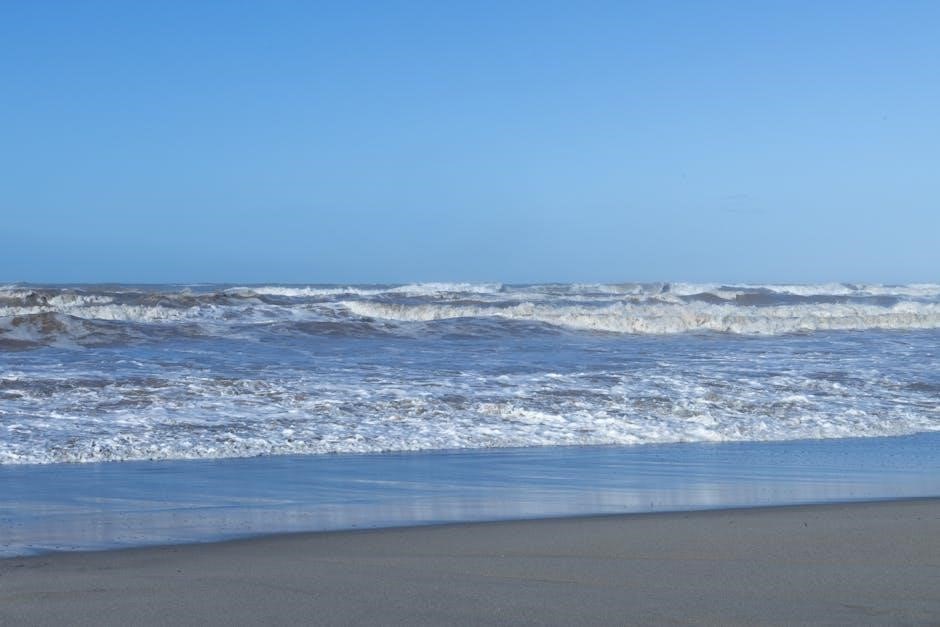
Conclusion
The PADI Open Water Diver Manual provides a comprehensive foundation for safe and enjoyable diving. It equips learners with essential skills, knowledge, and environmental awareness, ensuring a lifelong passion for scuba diving while promoting marine conservation and responsible practices.
